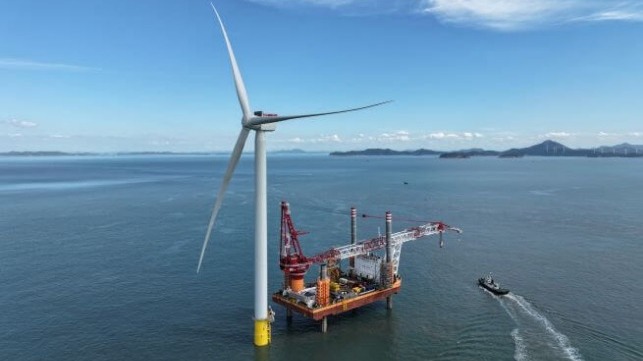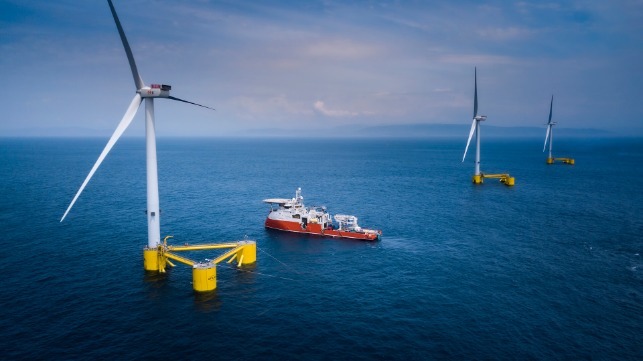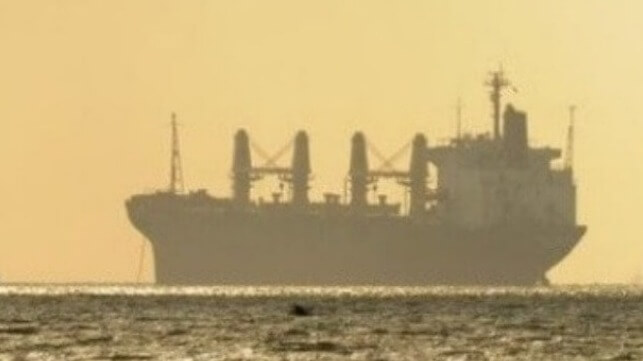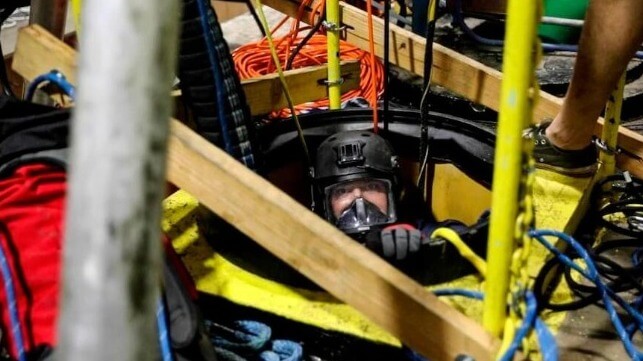Israeli prepares to annex the occupied West Bank and impose a fait accompli on the Palestinians

A view of the West Bank separation barrier, which separates Bethlehem from Jerusalem, has become the site of many artists’ drawings to depict the Israeli attacks on Palestinians, on November 12, 2024 in Bethlehem, West Bank [Wisam Hashlamoun/Anadolu Agency]
As soon as it was known that Donald Trump will be back in the White House in January, far-right Israeli Finance Minister Bezalel Smotrich announced that 2025 would be the year to impose the occupation state’s sovereignty over “Judea and Samaria”, known to the rest of the world as the West Bank. Naftali Bennett made a similar announcement in 2016, when Trump was a US presidential candidate for the first time. The Palestinian territory, said Bennett, should be part of the occupation state.
Annexation is illegal under international law.
Any Israeli attempt to annex the West Bank projects a worrying picture of the consequences. The Israelis themselves are monitoring this, but it is not acknowledged by the right-wing government, because even partial annexation could lead to some negative responses that would jeopardise the occupation state’s position. While the Jewish settlers and their leaders who support annexation claim that it can be implemented gradually and thus be revealed as a fait accompli, with reduced negative consequences, research suggests that this is a delusion.
The gradual annexation of so-called Area C of the West Bank (delineated by the Oslo Accords and controlled fully by Israel), or even part of it, is expected to lead to the collapse of the Palestinian Authority, and thus the end of its security coordination with the occupation state, and the occupation army will have to control the occupied Palestinian territory. In such a situation, Israel will be forced to fund a military-run regime and be responsible for the lives of 2.8 million Palestinians. The cost of such a move is estimated at $14.5 billion annually, including expenses for health services, education and national insurance for Palestinians.
OPINION: Smotrich has confirmed that the quest for ‘Greater Israel’ is real
Moreover, the annexation of the West Bank could damage the Israeli economy due to a predicted decline in foreign investment and the imposition of international sanctions. Security will also be affected, as the occupation army will be required to double its presence on the ground, hindering its readiness for war on other fronts. Vital security cooperation under the peace treaties with Jordan and Egypt will be hit, with the potential for Jordan to become dangerously unstable within the international arena, and Israel could find itself in a serious diplomatic crisis.
Even if the incoming Trump administration supports the annexation move, even tacitly, the reaction of Europe and the Arab world is expected to be harsh. It is likely to include economic and diplomatic sanctions, and Israel’s international legitimacy, such as it is, will be damaged severely.
It might even be declared to be a pariah state, similar to South Africa during the apartheid era.
The main fear, though, is that annexation will lead to a point of no return, where the occupation state will be forced to choose between two impossible options: a binational state in which it will lose its Jewish majority, or an apartheid regime in which millions of Palestinians live under Israeli military rule, without full civil rights. Israel has already been found to have passed the threshold as an apartheid state by B’Tselem, Human Rights Watch and Amnesty International.
Coinciding with Israeli preparations to annex the West Bank, the government’s attitude towards Palestinian construction, especially in Area C, means implementing a demographic and population revolution in favour of the Jewish immigrant settlers at the expense of the indigenous Palestinians.
There were 2,868 new Palestinian buildings built in Area C from June 2023 to May 2024, less than half of the number built in the corresponding periods in previous years since 2018. The monthly average in 2023 was 260 new Palestinian buildings, compared with an average of 608 buildings per month in previous years from 2018 onwards. This is a 57 per cent decrease. Meanwhile, there has been very intense activity by the occupation army, prompting many Palestinians to stay in their homes and postpone their housing plans.
READ: Israel forces assault staff member after storming Palestinian school
The operations of the army-run Civil Administration in the West Bank; the appointment of far-right extremist Smotrich as Finance Minister and as an additional minister in the Defence Ministry; and the establishment of the Settlement Directorate have all contributed to imposing more control over Palestinian land in the West Bank. This began with building a strategy for work and determining the location for Palestinian construction, and has been extended to a legal advisory system to deal with petitions, the confiscation of engineering equipment and the demolition of “unlicensed” structures that deter Palestinian residents from trying to extend their homes or build new properties.
A major factor in the decline in Palestinian construction has been the decisive move by the Ministry of Settlements and National Missions, headed by Orit Strook, to fund land coordinators in all settlement councils. Their job is to patrol in a vehicle and use drones to detect and report any Palestinian construction. The result has been the confiscation of more than 440 tractors, small trucks and engineering tools used by Palestinian contractors, leaving them without tools for lengthy periods, which is costly and forces them to think twice before their next construction project.
The occupation authorities do not hesitate to demolish any new Palestinian building.
Unlike the past, the procedure is short and sharp. The heads of Palestinian villages know that anything being built has a low chance of survival and faces rapid demolition. The occupation authorities have destroyed 901 Palestinian buildings in Area C this year alone, and declared 5,978 acres to be state land. This is equivalent to half of the entire area that was declared as state land since the 1993 Oslo Accords.
With 19 per cent of Palestinian new-build sites destroyed in 2021, 27 per cent in the following year, 2022, and 22 per cent in 2023, a shocking increase has been recorded this year, with 68 per cent of new Palestinian buildings destroyed. All of this is in preparation for the annexation of the West Bank as soon as Donald Trump takes office in January. With many supporters of Israel’s illegal settlements nominated for major positions in his administration, the incoming US president may be unable to stop the annexation plan, even if, as Republican Party sources claim, he opposes it.
Analysis: With an emboldened Israeli far-right calling to resettle Gaza, Israel's systematic destruction is seen as a prelude to mass Palestinian displacement.

21 November, 2024
Since its launch on 5 October this year, Israel’s campaign of forced evacuations in northern Gaza has claimed over 2,000 Palestinian lives and left more than 6,000 injured. While the immediate toll is devastating, Gazans fear an even darker threat looms over the enclave’s future.
Eyewitness accounts detail the widespread levelling of neighbourhoods in northern Gaza, with bulldozed infrastructure and new road networks tailored for military use. Coupled with growing calls within Israel’s political establishment to reinstate settlements in the area, these developments are deepening fears of permanent Palestinian displacement.
The destruction has sparked speculation that Israel intends to establish a buffer zone along its border with Gaza, a security measure that could also prevent the return of displaced Palestinians, but more troubling is the spectre of reintroducing settlements to northern Gaza, a region Israel evacuated in 2005 when it dismantled 21 settlements as part of a unilateral withdrawal.
The Israeli resettlement of Gaza is no longer a fringe idea
In-depth
Jessica Buxbaum
While Israel’s government has not explicitly announced plans to annex northern Gaza or resettle it with Israeli civilians, observers point out that the widespread displacement and destruction align with longstanding proposals from Israeli military figures to establish a no-man’s land in northern Gaza, intended as a buffer zone against potential attacks.
Far-right parties and settlement organisations in late October organised a provocative rally held just hundreds of meters from Gaza’s border. The event featured members of Israel’s parliament and cabinet, all advocating for renewed settlement in Gaza. This gathering followed a January conference, during which far-right activists and lawmakers signed a petition urging the Israeli government to rebuild settlements in Gaza and northern parts of the West Bank.
Ahmed Fayad, a researcher in Israeli affairs, argues that these calls are “deeply rooted” in the ideology of the Zionist movement now dominating the government.
“This government believes that wherever settlements exist, the army will defend them, thereby ensuring security for surrounding areas,” Fayad told The New Arab, adding that he sees the push for settlements in northern Gaza as driven by “ideological conviction” as well as “political and military aims”.
Israel’s current actions in northern Gaza, which include razing buildings, displacing populations, and enforcing strict security protocols, appear designed to create “a buffer zone, ostensibly to protect nearby Israeli communities,” he adds.

“It’s too early to conclude that far-right proposals for new settlements will gain traction,” he noted. “Settlements require a level of security and stability that simply doesn’t exist in Gaza right now. The territory is still a closed military zone, inaccessible even to Israelis.”
The future of Gaza, Fayad contended, depends on how Israel envisions its administration of the territory in the post-war era.
“There’s a clear desire among elements of the Israeli government, as well as far-right activists, to reestablish settlements in Gaza,” Fayad said. “Legislative and administrative measures already in place could make this relatively easy to execute. However, such a move hinges on military and political decision-making, which is complicated by the memory of the severe security risks settlements faced before Israel’s 2005 withdrawal.”
Related
Israeli ethnic cleansing nears completion in northern Gaza
Analysis
Paul R. Pillar
The shift from political discourse to open calls for action is evident in statements by Israeli politicians and officials. Current and former members of Israel’s Knesset, ministers, and other high-ranking figures have increasingly advocated for establishing settlements across Gaza.
Mowaffaq al-Kafarna, a political science professor at Gaza University, does not rule out the eventual establishment of settlements but considers it unlikely during the current military campaign.
“The war is ongoing, and the complexities of ensuring security for settlements make such a move implausible at this stage,” he said.
However, he warns that Israel’s actions on the ground suggest a long-term strategy to completely evacuate northern Gaza.
“In this scenario, northern Gaza’s depopulation is just the beginning, with the process potentially extending to Gaza City itself,” al-Kafarna explained. “Israel seems intent on creating a northern Gaza entirely devoid of Palestinian presence, starting with this evacuation as a precursor to wider changes.”
He pointed to the systematic destruction of neighbourhoods and the construction of new road networks bisecting northern Gaza as evidence.
“The division of northern Gaza into isolated sections, combined with widespread destruction, lays the groundwork for gradual and comprehensive depopulation,” he said. “What we’re seeing is the first phase of a larger plan to establish security zones. Settlements may follow, depending on Israel’s long-term calculations.”
He also believes the overarching goal is to neutralise Gaza as a threat to Israel, dismantle resistance groups entirely, and replace Hamas with a pliable civilian administration loyal to Israeli interests.
“This is about ensuring Gaza can never challenge Israel again,” al-Kafarna said. “It’s not just about military domination but also political control, ensuring free movement for the Israeli military while maintaining a civilian administration subservient to Israeli security interests.”

One possibility, he suggests, is the incorporation of Gaza under Israel’s broader political and security apparatus. However, this would likely exclude any responsibility for the Palestinian population, which Israel might delegate to international organisations.
“This would contrast sharply with the West Bank, where the Palestinian Authority manages civilian life. In Gaza, there would be no place for any Palestinian-led authority,” he noted.
From the Palestinian perspective, the signs on the ground suggest that settlements are not a distant possibility but an imminent reality. Nasser Attaallah, a Palestinian writer and political analyst, believes that Israel’s policies and actions in northern Gaza are preparing the ground for settlement expansion.
“Netanyahu and his extremist government have dredged up distorted historical and ideological justifications to legitimise these brutal crimes,” Attaallah said. “Settlement in Gaza is no longer just a plan; it’s becoming a reality.”
He warned that such moves will further entrench Palestinian dispossession, with “devastating consequences for the already shattered social and economic fabric of Gaza”.
For Palestinians like Attaallah, the renewed settlement discourse signals a return to a dark chapter they hoped was closed.
“We are witnessing the resurrection of an old nightmare,” he said, “and the world seems powerless to stop it”.
As Israel continues its military campaign in Gaza, Palestinian voices express a deepening sense of despair and inevitability over the region’s future. For many, the 7 October Hamas attack on Israel, which set off the latest escalation, has become a pretext for what they describe as the total obliteration of Gaza.
Related
With Trump's win, Israel moves closer to annexing the West Bank
Analysis
Jonathan Fenton-Harvey
“Gaza is facing a full-scale settlement project,” Attaallah asserts. He argues that years of far-right planning, previously limited to policy papers, are now becoming a reality under the current government. The situation is further compounded, he believed, by the global landscape, particularly the influence of now-President-elect Donald Trump.
“During his first term, Trump legitimised settlements and supported every move by the Israeli right wing. With an administration sympathetic to the settler cause, the situation for Palestinians can only worsen,” he explained.
For Palestinians, this rhetoric, combined with the devastation on the ground, signals the erasure of any prospects for autonomy or stability. The stakes, Attaallah emphasises, could not be higher.
“This is about more than land - it’s about the survival of a people and the obliteration of their existence.”
This article is published in collaboration with Egab.

Palestinians fleeing to Gaza City with their belongings they could take with them, on October 23, 2024 in Gaza City, Gaza. [Mahmoud Isleem – Anadolu Agency]
MEMO
by Syeda Fatima Shuja

Realism is a prominent school of thought in international relations and often justifies state actions based on national interests, power dynamics and security. It prioritises the preservation of the state’s autonomy and survival, even at the expense of ethical considerations. However, realism fails to address the moral implications of state actions adequately, particularly when they result in human suffering and violations of international law.
“States,” said Kenneth Waltz in 1979, “are the principal actors in international politics, and their primary concern is survival. The structure of the international system compels states to act in ways that maximise their security.”
In the context of the Israel-Palestine conflict, realism’s reliance on power and security has often masked the underlying injustices and deprivations faced by the Palestinians. It has perpetuated a binary understanding of the conflict, overlooking the complexities of historical grievances, political motivations and the legitimate Palestinian struggle for self-determination.
This narrow perspective overlooks the crucial need for justice, accountability and the recognition of Palestinian rights.
Israel’s latest invasion and occupation of the Gaza Strip, a densely populated territory now under complete Israeli control, is a stark example of how realist thinking can fail to address fundamental moral concerns. The ongoing blockade, military operations and restrictions on movement have caused immense human suffering, yet these actions are often justified by the need to ensure Israel’s security. This approach ignores the long-term consequences of the occupation, including the erosion of trust, the perpetuation of violence and the hindering of peace negotiations. Not for nothing has it been called a “plausible genocide” by the International Court of Justice.
READ: IDF soldiers will pay for Netanyahu seeking to impose military rule in Gaza, warns Gallant
The justification used by Israel for its capture of the Gaza Strip is rooted in a combination of historical narratives, security concerns and political calculations. The claim that Gaza is a strategic buffer zone for Israel is often used to justify the occupation, arguing that the territory’s control is vital for Israel’s security. This narrative, however, is highly contested, with critics arguing that it overlooks the disproportionate use of force against Palestinian civilians and the role of the “unlawful” (as per the ICJ) occupation itself in fuelling conflict.
For Israel, the war in Gaza is framed as a war of self-defence against the Palestinian Islamic Resistance Movement, Hamas, but, in reality, it amounts to a genocide against the Palestinians. The occupation of the Gaza Strip can be seen as a strategic move, aiming to gain an advantageous position in future negotiations. Moreover, Israel is interested in the natural gas fields off the coast of Gaza. The Zionist state also wants to eliminate the possibility of serious resistance from Gaza when extremist Jews seek to destroy Al-Aqsa Mosque in Jerusalem and build a temple in its place.
Although the ongoing air strikes, blockade of humanitarian aid and essential goods and services, and the destruction of civilian infrastructure including hospitals, schools and homes have led to a staggering number of civilian casualties, there has been little or no adequate action by the international community to stop the carnage. At least 44,000 Palestinians have been killed, mainly women and children, while 104,000 have been wounded. The sheer scale of the violence, along with the targeting of civilians, has drawn accusations of disproportionate force and collective punishment.
The loss of innocent lives, particularly children, has been devastating.
Thousands of children have been killed or severely wounded in their homes and schools, leaving families in shock. Women’s rights and safety have also been undermined as they bear the burden of displacement, loss of loved ones and injury. Rapes by soldiers have been reported. Whole communities and generations have been affected, losing their homes, futures and hopes.
READ: British MPs urge government to endorse ICC arrest warrant for Netanyahu, Gallant
The ongoing genocide in Gaza raises serious questions about Israel’s treatment of civilians. This is not self-defence as outlined by the realist perspective, as the state is not focusing on addressing the threat posed by Hamas, which it regards as a terrorist organisation. That’s just an excuse. Ethnic cleansing of the enclave is the objective, either through killing or displacement. What’s more, an occupation state — Israel in this case — has no legal right to claim “self-defence” against the legitimate resistance of the people living under its military occupation.
The occupation state has ignored the repeated calls by the international community to respect international law and protect civilians. This highlights the need for reform of the United Nations, where Israel has been protected by the US veto and no means of enforcing resolutions are available. This emboldens Israel and allows it to act with total impunity. The effects are starting to be felt badly across the whole region.
While there has been much talk about the political aspects of “the day after” the war, little thought has apparently been given to the undoubted serious physical and mental health issues affecting the Palestinians in Gaza. Children are traumatised, as are their parents. Who is going to help them?
In the middle of all of this, even as Western governments struggle with poverty and declining public services in their own countries, they continue to give billions of dollars in aid to Israel as well as preferential trading, research and arms agreements.
Nobody is able to explain why with any degree of conviction.
Realism fails to address the humanitarian crisis in Gaza because it focuses solely on power dynamics and security concerns, ignoring the human suffering and rights violations. This narrow perspective perpetuates the cycle of violence without tackling the underlying cause: the decades-old occupation. A just approach based on international law and human rights is needed to end the conflict.
“The Israeli occupation of Palestine is an affront to human rights, an act of aggression, and a violation of international law,” said Noam Chomsky. How right he was.
Smotrich has confirmed that the quest for ‘Greater Israel’ is real

Israel’s Finance Minister and leader of the Religious Zionist Party Bezalel Smotrich on March 20, 2023 [GIL COHEN-MAGEN/AFP via Getty Images]
MEMO
by Hussein Laqra’a
November 20, 2024

The leaders of 56 Arab and Islamic countries advocated at the Riyadh Summit last week for the “two-state solution” and the need to establish a Palestinian state on the nominal borders of 4 June 1967, and tried to convince the world that it is the only solution to the Palestinian issue. In response, the extreme far-right Finance Minister of the occupation state, Bezalel Smotrich, insisted that 2025 will be the year that “Judea and Samaria” — the occupied West Bank — will be annexed to Israel and that he expects US President-elect Donald Trump to support this step. He basically confirmed that the quest for “Greater Israel” is real.
The nominal borders as at 4 June 1967 were the 1949 Armistice (“Green”) Line between the Zionist state of Israel and the West Bank, Gaza Strip and East Jerusalem. These occupied Palestinian territories combined make up no more than 22 per cent of occupied Palestine. This means that the 56 Arab and Islamic countries have agreed that 78 per cent of Palestinian land should be served to the Zionist occupation state on a silver platter. In fact, the 2002 Arab Summit in Beirut approved of this.
Some Arabs paid for advertisements in Israeli newspapers to promote this “Arab Peace Initiative”, but the Zionist Prime Minister at the time, war criminal Ariel Sharon, said that it “is not worth the ink it was written with” and rejected it completely. This rejection of the initiative continues to this day, despite Arab pleas and appeals, as well as the many humiliating concessions made by the Palestinian Authority since the 1993 Oslo Accords were signed. The occupation regime and parliament passed a bill recently refusing to recognise a Palestinian state, even if the entire world does so. The Israeli right and left, government and opposition, all agreed on this.
OPINION: A nation in denial: Why Israel’s defeat is imminent
Now Smotrich is working to bury the two-state solution once and for all, and Prime Minister Benjamin Netanyahu supports him. We have to ask, therefore, why the Arab and Islamic countries are trying to revive the moribund “two-state solution” despite it being biased and complicit with the occupation?
More than 30 years of “negotiations” have simply bought time for the occupation regime to steal more Palestinian land.
We now know — if anyone was ever in any doubt — that the settler-colonial state rejects sharing Palestine with the Palestinians, even if it is only 22 per cent of the historic territory. While arguing that chants of “From the river to the sea, Palestine will be free” are “anti-Semitic”, the Zionists have no qualms about stating openly that they want a Jewish state “from the river [Jordan] to the [Mediterranean] sea”. Intensive settlement activity — all illegal under international law — is swallowing up what remains of the West Bank and East Jerusalem, and probably northern Gaza as well if the occupation regime is allowed to get away with its ethnic cleansing and genocide. It would have made far more sense, therefore, for the Arab and Islamic leaders to turn this humiliating page, forget about a “two-state solution” and declare the death of the so-called “peace process”. At the same time, they could have announced their collective political and practical support for legitimate resistance to the brutal Israeli occupation.
I have been saying for years that the Palestinian Authority is wrong to participate in futile negotiations with the occupation state to establish an independent Palestinian state that the Zionists will never accept. And that this path will lead to the loss of what remains of Palestine and thus the liquidation of its cause.
I have also said that the Arabs are wrong to waste their time chasing the mirage of peace with a criminal, fascist, racist, expansionist regime which wants all of Palestine for itself; and, indeed, wants to establish “Greater Israel” from the Nile to the Euphrates, despite the peace treaties and normalisation agreements with its neighbours whose land it will steal. When the occupation finishes swallowing the West Bank and East Jerusalem with settlements and announces their annexation, it will devote itself to expanding at the expense of its Arab neighbours, into Lebanon, Syria, Jordan, Iraq, Kuwait, Saudi Arabia and Egypt, even if it takes another eight decades. When the right time is right, the occupation will do this and will not care about any of the normalisers who are now supporting it against any and all legitimate resistance, thinking that they are thereby weakening Iran’s influence in the region and creating the appropriate conditions for a comprehensive peace deal.
Smotrich stood next to a map of the State of Israel in March 2023 in France, and “Israel” included Jordan, even though the Zionist entity signed a peace treaty with the Hashemite Kingdom in 1994. Didn’t the terrorist Menachem Begin sign a peace treaty with Egypt in 1979?
That won’t stop the Zionists. They want it all, and give nothing in return.
The issue is quite clear, but unfortunately the Arabs continue to bury their heads in the sand. If they were rational, they would have stopped the reckless promotion of the two-state solution illusion that the occupation regime does not want, and the normalisation countries would have severed, not strengthened their relations with it. Moreover, the Palestinian Authority would announce the end of security coordination with the enemy forces in the West Bank, the cancellation of the Oslo Accords, and its return to resistance against the occupation. If the Arabs were rational, they would have backed the legitimate resistance as their own first line of defence instead of abandoning the Palestinians in Gaza. Are they all insane?
Translated from Echoroukonline,











